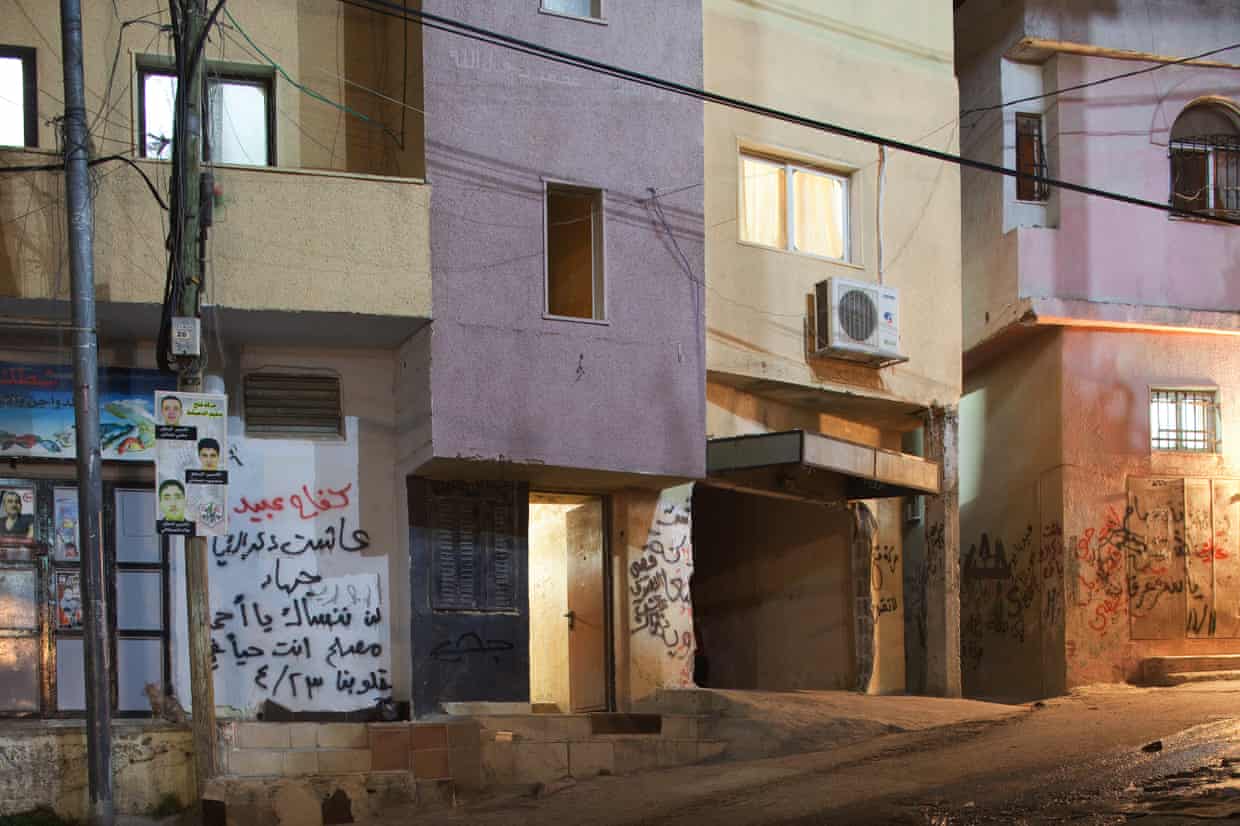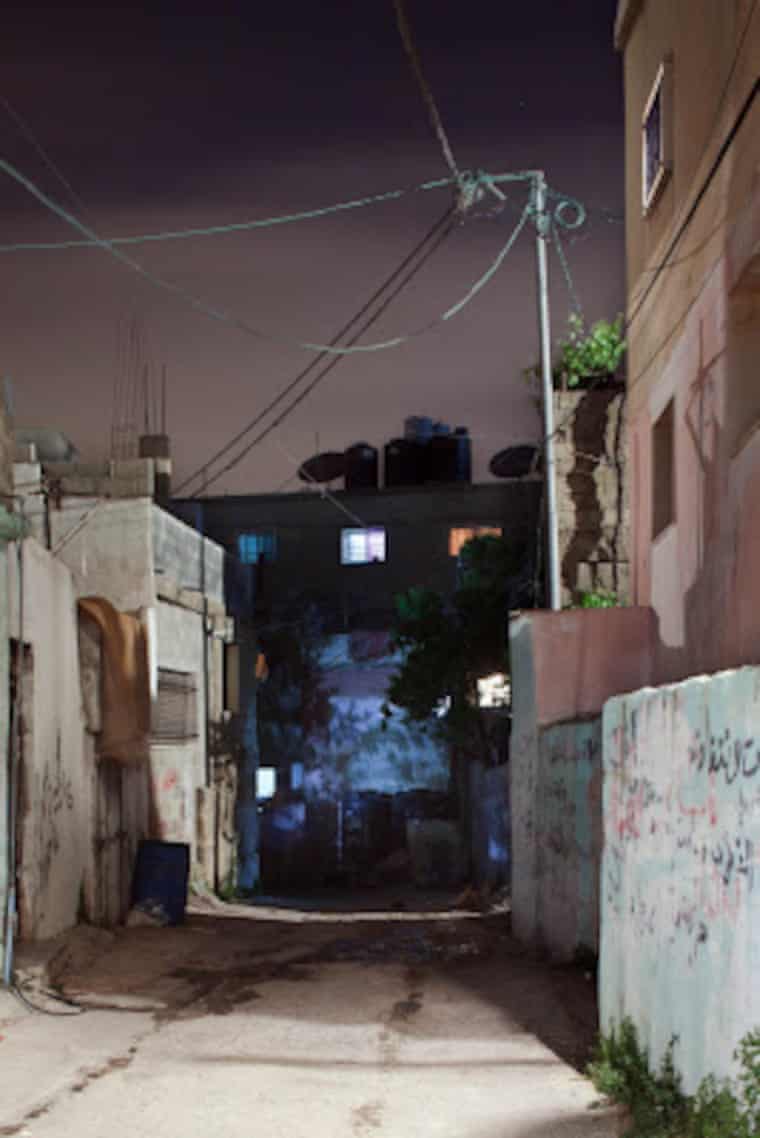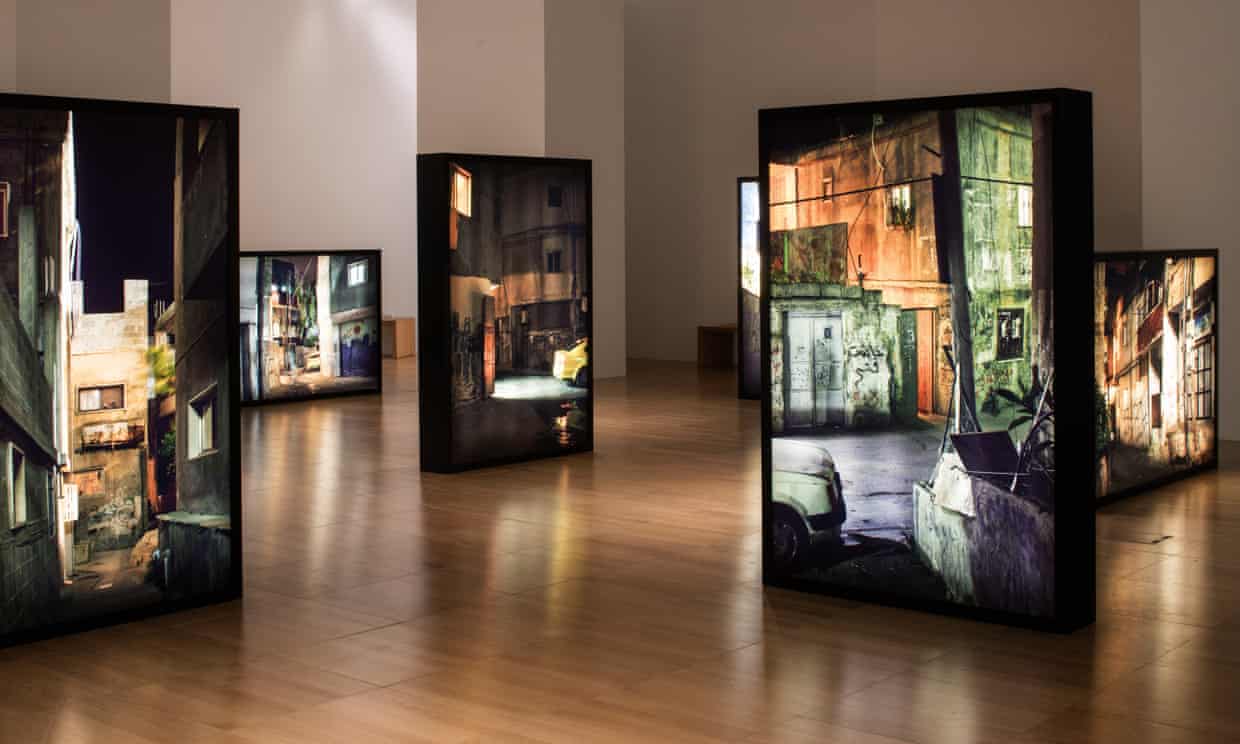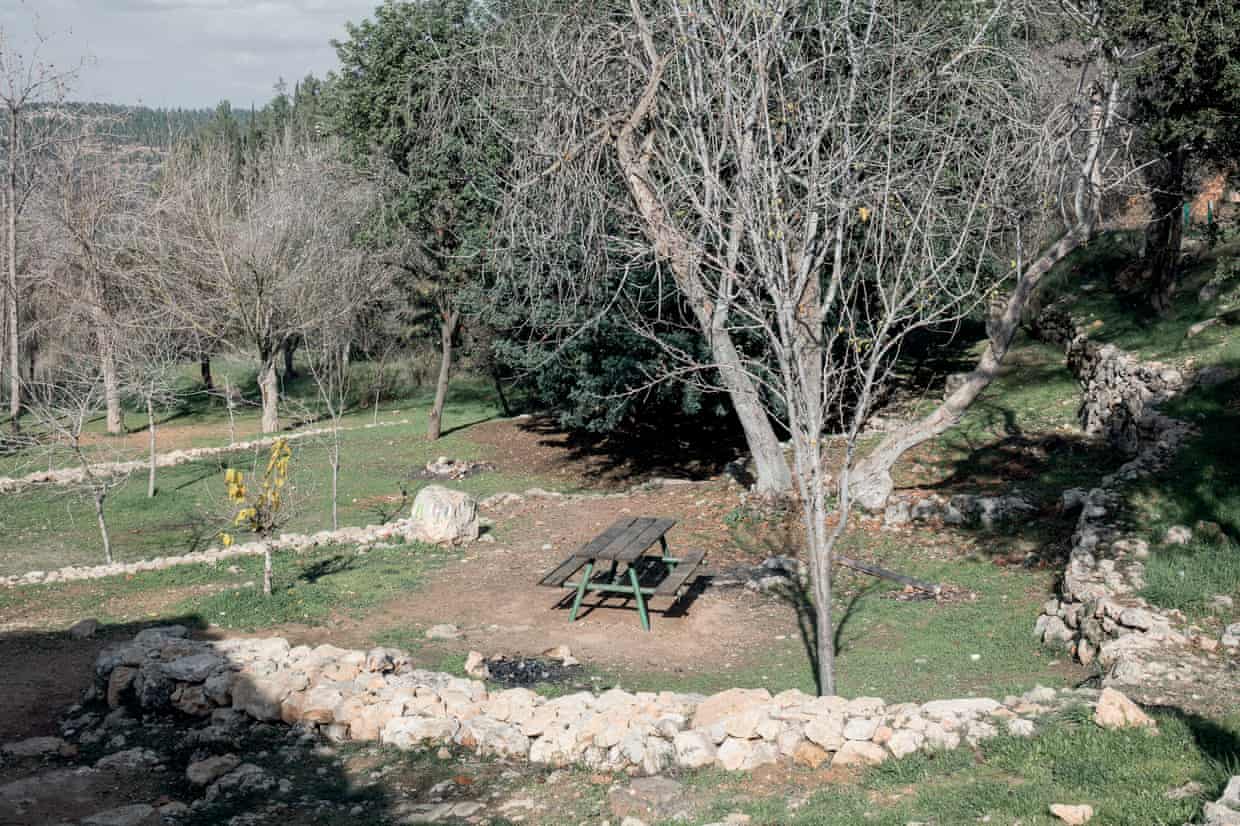Palestinian refugee camp seeking Unesco world heritage status
 Saturday, October 16, 2021 at 02:49PM
Saturday, October 16, 2021 at 02:49PM by Oliver Wainwright 14 October 2021 The Guardian
For 70 years, the ramshackle Dheisheh refugee camp near Bethlehem has been a site of displacement. Why is this ‘heritage of exile’ not enough for Unesco to grant it the status it gives Macchu Picchu and Venice?

‘Outstanding universal value’ Dheisheh refugee camp, the subject of Stateless Heritage at the Mosaic Rooms.Photograph: Luca Capuano
The Dheisheh refugee camp near Bethlehem doesn’t look much like your usual Unesco world heritage site. For a start, there are no souvenir stalls or swarms of trinket hawkers. Instead, cracked concrete walls covered with Arabic graffiti frame the entrance to a corner shop, where an old photocopier stands next to a few meagre shelves of provisions. A taxi loiters on a potholed street between piles of broken breeze blocks, while electricity cables and phone wires dangle precariously overhead.
But a new exhibition at London’s Mosaic Rooms sets out to argue that this ramshackle site of mass displacement should be considered worthy of the same protected status as Machu Picchu, Venice or the Taj Mahal. “We want to destabilise conventional western notions of heritage,” says Alessandro Petti. “How do you record the heritage of a culture of exile? When world heritage sites can only be nominated by nation states, how do you value the heritage of a stateless population?”
Since 2007, Petti has been working with Sandi Hilal, leading DAAR, the Decolonising Architecture Art Research collective, treading nimbly between the worlds of architecture, politics and development. For the last seven years, they have been working with Palestinian refugees in the Dheisheh camp to compile an unlikely dossier to submit to Unesco, arguing for the location’s “outstanding universal value” as the site of the longest and largest living displacement in the world.

‘How do you value the heritage of a stateless population?’ … Dheisheh refugee camp. Photograph: Luca Capuano
In a process they describe as “playing seriously”, they have used the UN heritage agency’s own arcane nomination criteria to subvert the idea of international heritage protection and question assumptions about the status of this supposedly temporary camp. “Is the camp just a site of misery,” they ask, “or does it produce values that need to be acknowledged and protected?”
The exhibition begins by setting the scene with a cluster of large, freestanding light boxes in the ground floor gallery, glowing with atmospheric shots of the Dheisheh camp. They were taken by Luca Capuano, an Italian photographer who was previously commissioned by Unesco to document Italy’s famous world heritage sites. Petti and Hilal’s aim was to bring some of the artful romance of his carefully composed night-time shots of Venetian alleyways and Tuscan hill-town piazzas to the makeshift jumble of the refugee camp. The scenes have a seductive filmic quality, with pools of light spilling from doorways left ajar, and alluring alleyways beckoning you around the corner. Squint and you could be in Venice – a shot of which is included for comparison, recalling that city’s own beginnings as a place of refuge. It is a world away from the usual images of refugee camps, forever depicted as hopeless places of sun-scorched desperation.
Established in 1949 to house more than 3,000 Palestinians expelled from their villages by Jewish militias in the Arab-Israeli war, Dheisheh has since swelled to accommodate 15,000 people. It began as a tent encampment, laid out on a military grid across an undulating stretch of land leased to the United Nations Relief and Works Agency (UNRWA) by the Jordanian government (which still technically owns the land). In the 1950s, as the conflict showed no signs of abating, the UNRWA began building small concrete shelter rooms for each family, with a rule of one square metre per person, and a bathroom shared between every 15 shelters. As time went on, families added further rooms and plots were aggregated, expanded and built up, ad hoc.
More than 70 years on, Dheisheh looks very little like how you might picture a refugee camp. When I visited in 2018, I found not rows of tents or shelters, but winding streets of multistorey concrete houses, a dense urban place of self-built structures that had evolved piecemeal over the decades. There are shops and schools, mosques and a community centre, all packed into an area of less than half a square kilometre. The only giveaway of its status is the occasional UN-branded garbage truck patrolling the narrow lanes.
Walls remain bare and steel reinforcement bars poke from most rooftops, but there is a good reason why it all looks so unfinished. Dheisheh is the product of being forced to live in perpetual limbo, with the eternal hope of one day leaving, creating what Petti and Hilal call a state of “permanent temporariness”. The neighbourhoods are still loosely arranged according to the villages where the refugees came from, and the families cling to the dream of returning home to their ancestral lands – which lie just a few kilometres away, beyond the impenetrable concrete wall of the Israeli security barrier.

‘Permanent temporariness’ … The Stateless Heritage exhibition.
 APJP |
APJP |  Post a Comment |
Post a Comment | 
Reader Comments